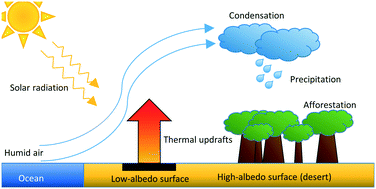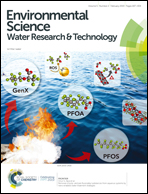Engineering artificial thermal mountains for large-scale water management and carbon drawdown
Abstract
To meet future climate change targets, it may become necessary to remove carbon dioxide from the atmosphere at an unprecedented rate and scale. This paper investigates a new potential strategy: the application of the thermal mountain effect to artificially increase rainfall in desert regions and transform such regions into a vegetated state, thus sequestering significant quantities of carbon. A preliminary systems engineering analysis evaluating the design parameters of an artificial thermal mountain is provided, along with the analysis of its potential for carbon capture and agricultural applications. It is estimated that a large-scale low-albedo coating, between 15 000 and 50 000 km2 in surface area, would, in principle, be sufficient to provide enough rainfall to irrigate a 1000 km × 2000 km section of the Sahara desert. While the scale of engineering is potentially vast, it is arguably smaller than other schemes such as enhanced rock weathering.



 Please wait while we load your content...
Please wait while we load your content...